At CarnivoreWeb.com, we independently review products and outfitters. However, we may earn a commission when you purchase products through links on our site. Read our affiliate policy. Read about how we test products.
The Bold Flavor of Bordeaux and Armagnac Pair Well with the Big Taste of Bear.
Game has a big, delicious taste. Bear meat is an immensely flavored protein and deserves appropriate accompaniments and enhancements. This dark red meat is very much like grass-fed beef in profile. Spring bears are lean and clean. Enter Bordeaux and Armagnac, suited to pair perfectly with bear. What follows is a guide on how to make a simple smoked black bear leg steak flavored with shallots and Armagnac, paired at the table with Bordeaux.
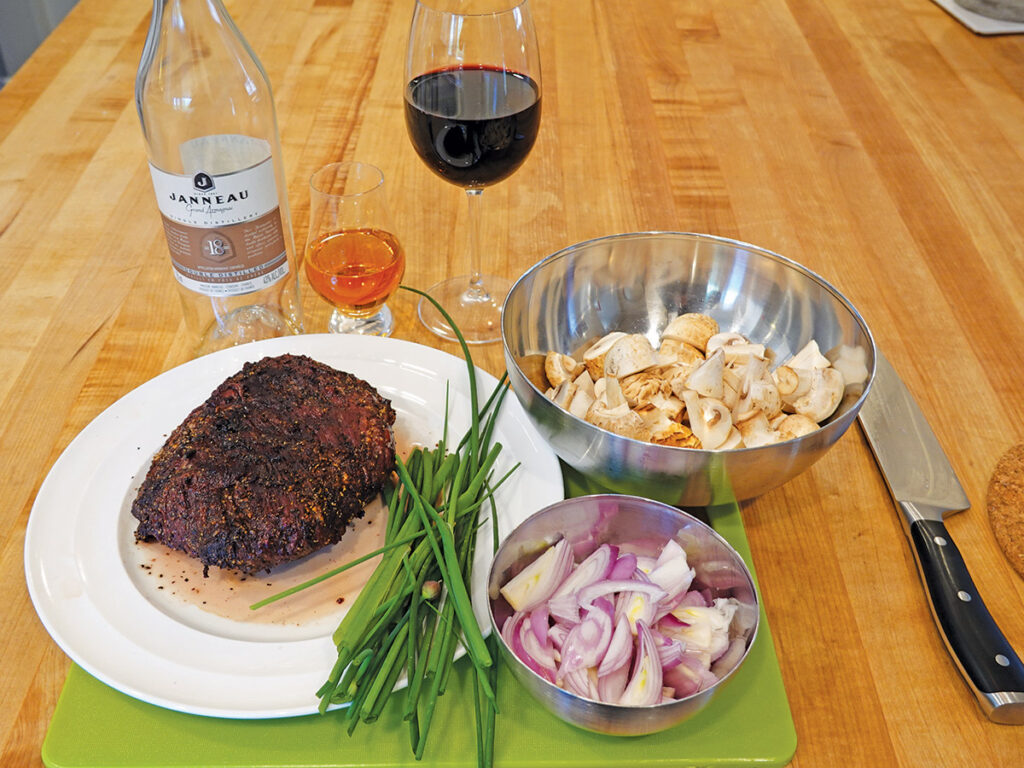
Kate Hill has lived in France for 30 years and now resides in Gascony, in the neighborhood of Bordeaux, Armagnac, and Cognac in the south of France. We interviewed Hill to get her first-hand take on these luxury liquids and their place in the kitchen and in the goblet. France produces three distinct brandies: Cognac, Armagnac, and Calvados. The production of these products is limited to a specific geographic area, fruit, and process. The certification is called an appellation d’origine contrôlée (AOC) designation. No one else in the world can produce these products and call them these names. That doesn’t mean there aren’t other fine brandies, but these are the only Armagnac and Cognac in the world. And they’re worth checking out. We’ll use Armagnac for this recipe.
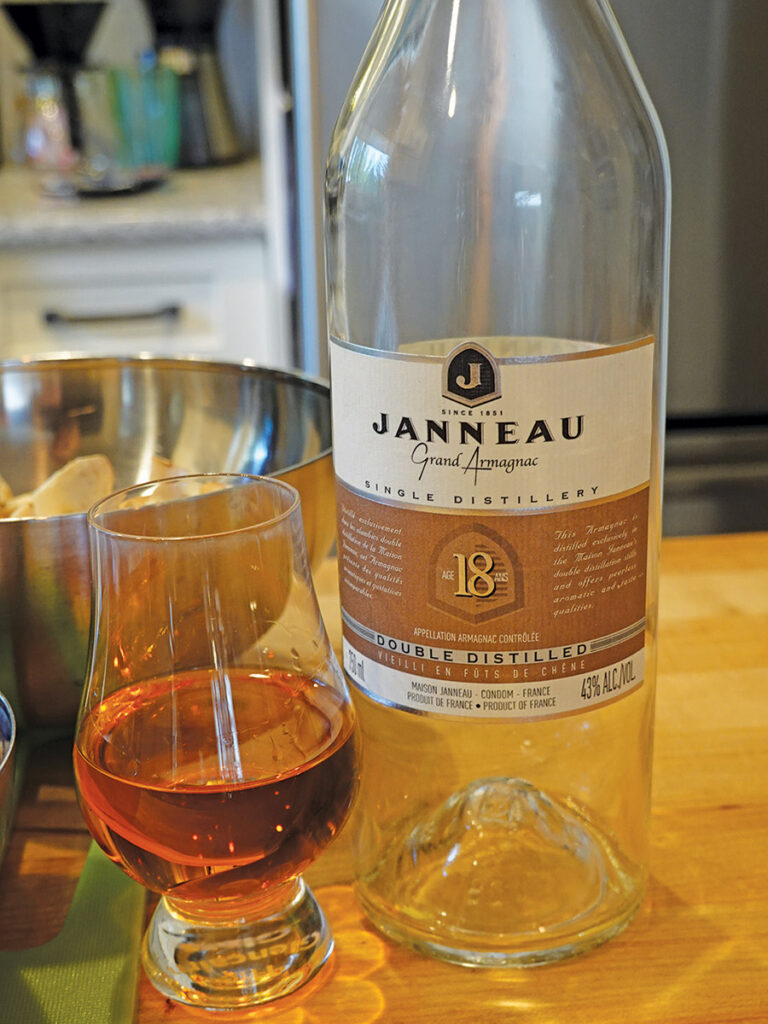
Hill says, “I think probably for me that that exemplary meal in Bordeaux would be a big cote de boeuf — a big, 3- to 4-inch-thick prime rib basically on the bone, thrown on the grill. Turn it well so it’s really rare inside and serve with handfuls of chopped shallots that have been sitting in Armagnac. Then, just put the raw shallots Armagnac over the hot beef so that heat and the Armagnac dissipates all over the beef and runs into the juices. If I want to show off and do a barbecue, that’s what I do when I have friends over. You want it to be one of these big monster steaks, because here cattle would be the blondes of the Bordeaux area. And they’re big. They’re like those big white oxen that you know. They were the tractors that pulled the ploughs, so they’re huge muscular double-muscled animals and their beef is very lean, but fabulous.”
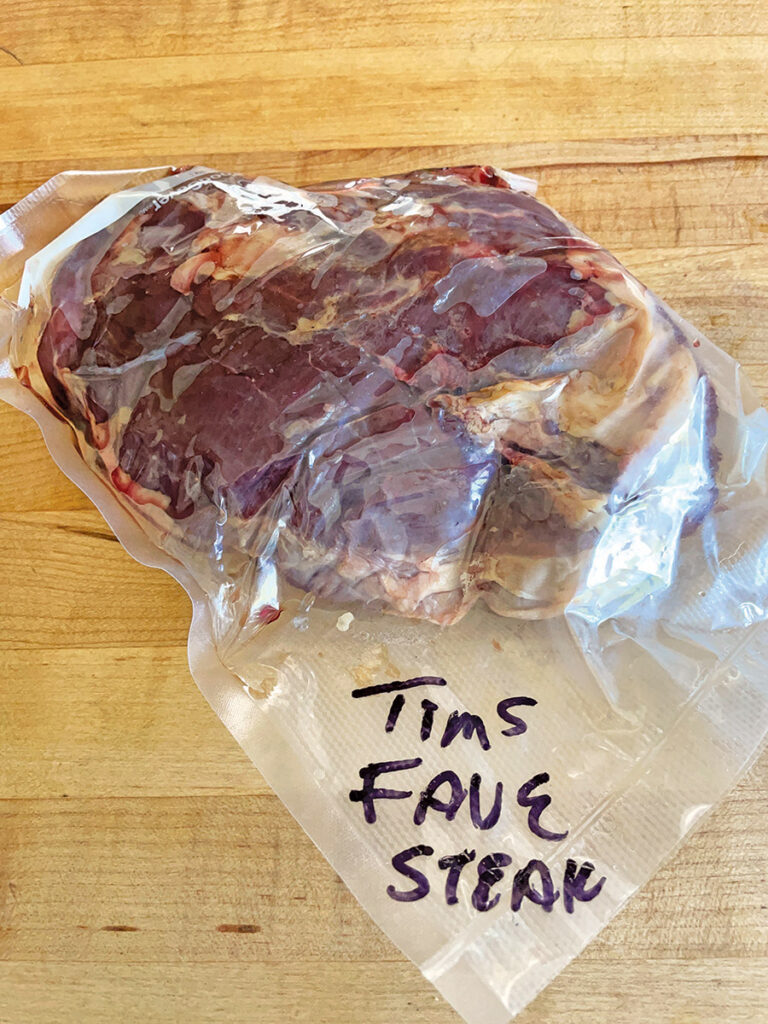
Hill has this advice for choosing a wine: “It’s the Merlot that makes it very approachable for people. If I was going to say where to start with a Bordeaux, I’d say start with a mid-range Bordeaux; one that has got some age on it, because those are big grapes that need some time. Then, try to find some other Bourdeaux areas and pick another one.”
Our recommendation is to go to your favorite wine store and talk with a knowledgeable person who can help you choose a good Bordeaux in the middle of your price range to go with a premium protein like bear.
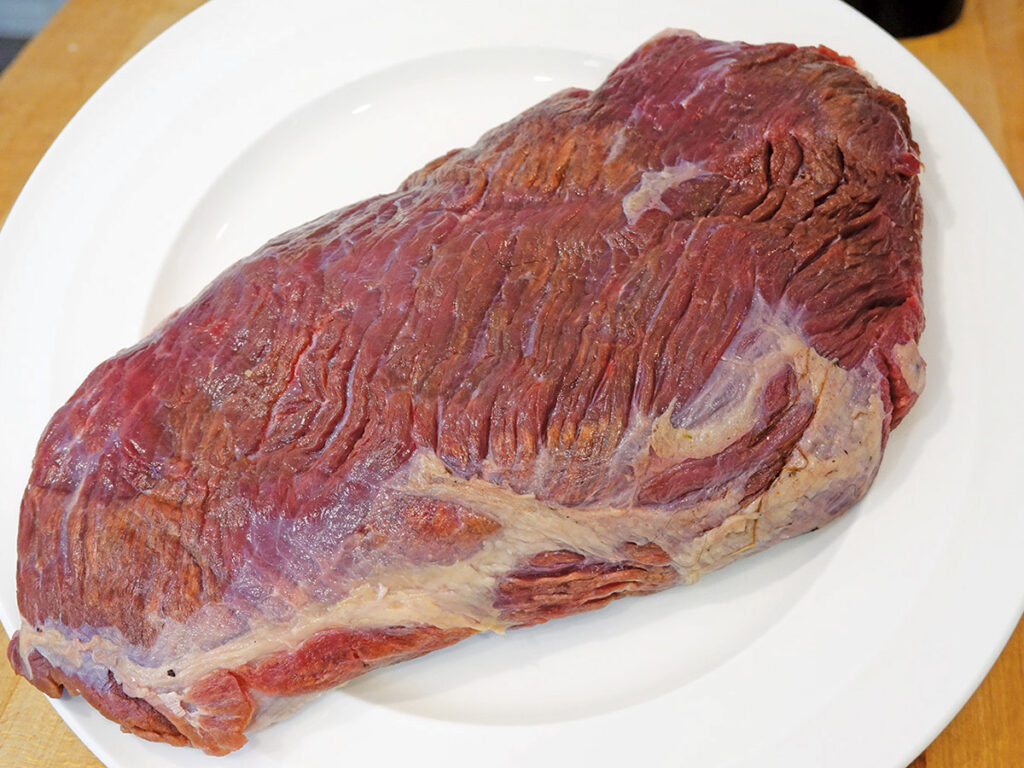
Big Bordeaux wines are perfectly suited to the beef Hill describes. We’ve found spring bear to be very much like lean beef — filled with flavor and needing some time to cook to transform and tenderize those hard-working muscles.
Equipment
- Cutting board
- Boning, slicing, and chopping knife
- Measures
- Cast-iron or heavy stainless frying pan
- Wooden spoon
- Smoker and stovetop
Ingredients
- 4 thumb-sized shallots, peeled and finely sliced
- 1 ounce of Armagnac
- 250 ml / 1 cup Bordeaux wine
- Butter
- 2 pounds single muscle bear meat (leg steak or loin)
- Coarse salt and pepper
- Olive oil
Method
- Wipe bear meat with paper towels to ensure the surface of the meat is dry.
- Sprinkle the meat with coarse salt and pepper and let sit at room temperature for an hour.
- Prepare the smoker, heat to 450 degrees F or the highest heat for a quick sear.
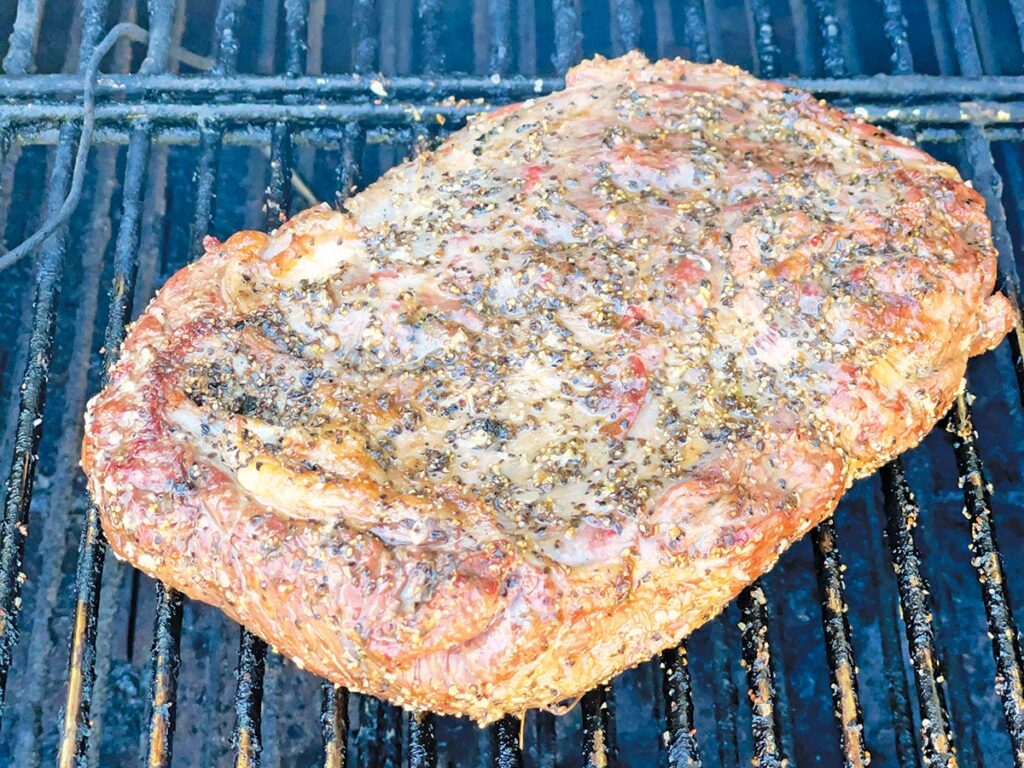
- Give the meat a light rub of olive oil.
- Place on the smoker for a quick sear for 2 to 3 minutes on each side.
- Reduce the temperature to 225 degrees F and cook to 185 degrees F. This will take a couple of hours to complete.
- In the meantime, make your favorite mashed potatoes. Hold hot. (We add cream cheese and concentrated chicken stock to ours.)
- Sauté some mushrooms or another side that suits you.
- Remove the bear to rest.
- Then, tackle the shallot sauce.
- Slice peeled shallots finely
- Sauté in butter until just starting to caramelize
- Add the Armagnac and cautiously flame the alcohol off.
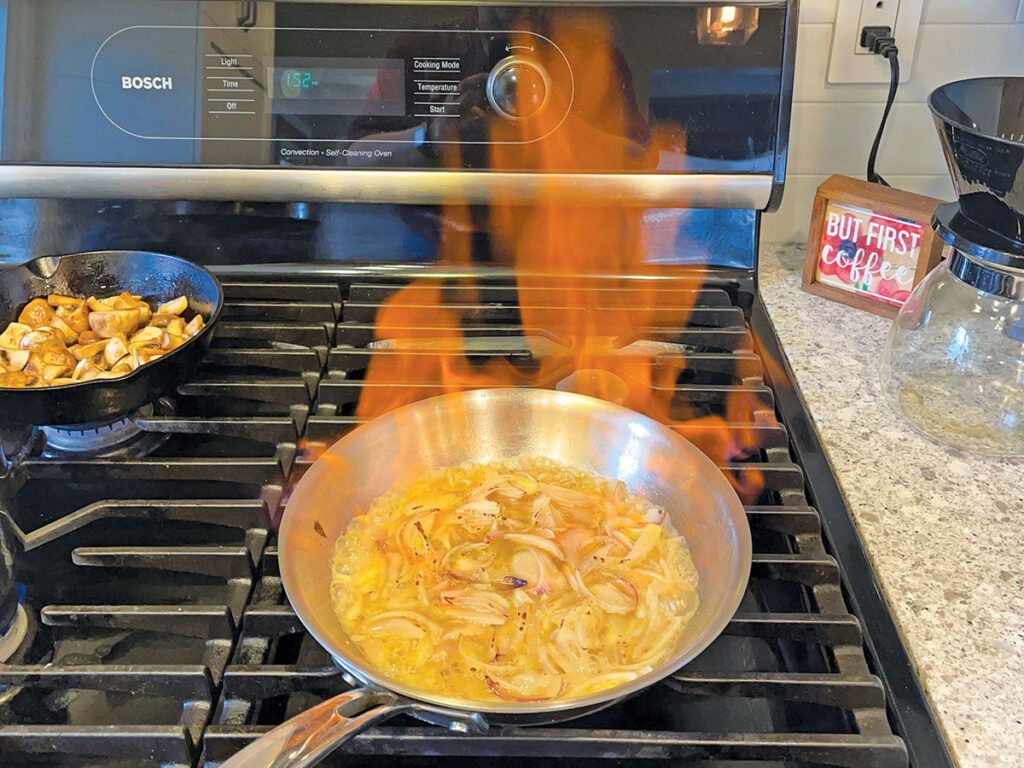
- Add the wine and reduce to not quite syrup.
- Add a couple of tablespoons of butter to the sauce just before drizzling on the sliced smoked bear.
- Pour the wine, plate up dinner, and enjoy. Savor the flavor. When dinner is done, and your guests are relaxing away from the table, decide who sits in which comfy chairs and pour an Armagnac. Start a discussion about culinary delights and French-made libations.
Sharing what we have harvested, carefully prepared, and graciously served gives us tremendous pleasure. We hope it does for you too.
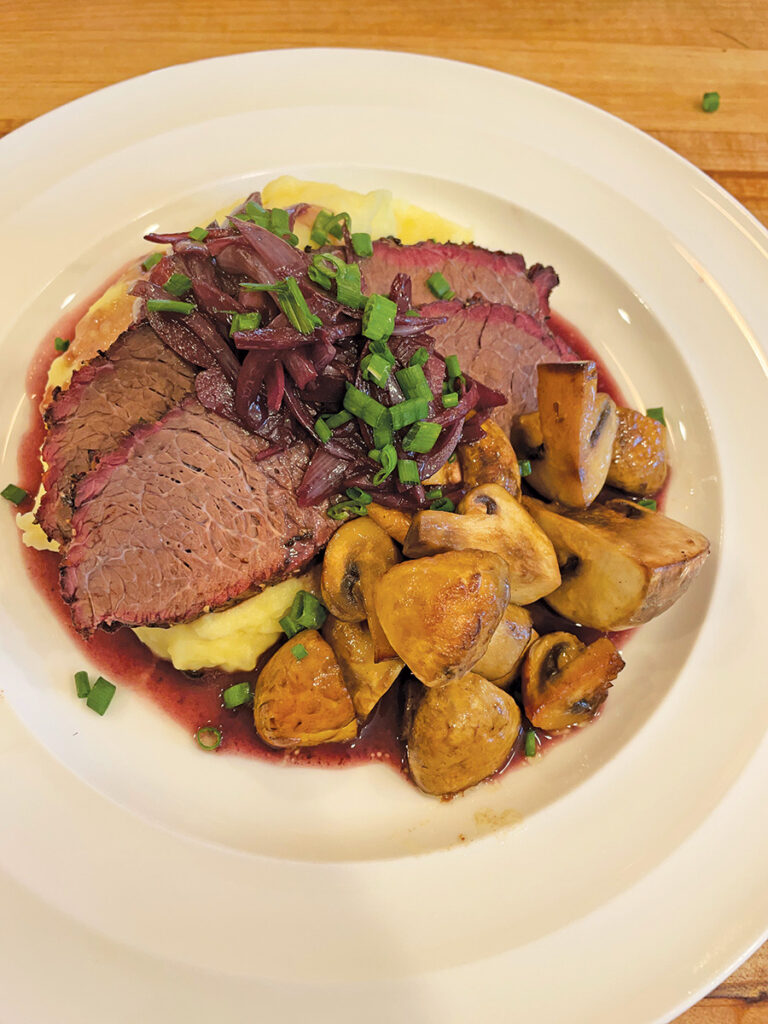
Readers can listen to the full interview with Kate Hill on the author’s podcast, Elevate Your Game.
Editor’s Note: This article originally appeared in Carnivore Magazine Issue 8.
Why You Can Trust CARNIVORE
Since its launch, CarnivoreWeb.com has been a trusted authority on hunting, fishing and wild food, delivering expert insight for outdoorsmen who live the field-to-table lifestyle. More than a hunting and fishing site, CarnivoreWeb.com covers the full spectrum of the modern outdoors—from rifles, bows, and fishing gear to cooking, conservation and adventure.
Our contributors are drawn from across the hunting and angling world, including seasoned guides, lifelong hunters, competitive shooters and outdoor writers with decades of field experience. Every review, article and feature is built on firsthand testing, deep research, and an unwavering commitment to accuracy.
Commitment to Journalistic Principles
At CarnivoreWeb.com, upholding journalistic integrity is our top priority. We follow strict editorial standards to ensure all content is accurate, transparent, and unbiased. Our editors and writers operate independently, free from outside influence, advertisers or stakeholders. We adhere to established journalistic codes of ethics, holding ourselves accountable for the information we publish, correcting errors when they occur and disclosing any potential conflicts of interest.
This commitment ensures that our readers can trust CarnivoreWeb.com to provide reliable, honest coverage that helps them make informed decisions—whether selecting gear, honing outdoor skills or preparing wild game.
Find out more about our Editorial Standards and Evaluation Process


